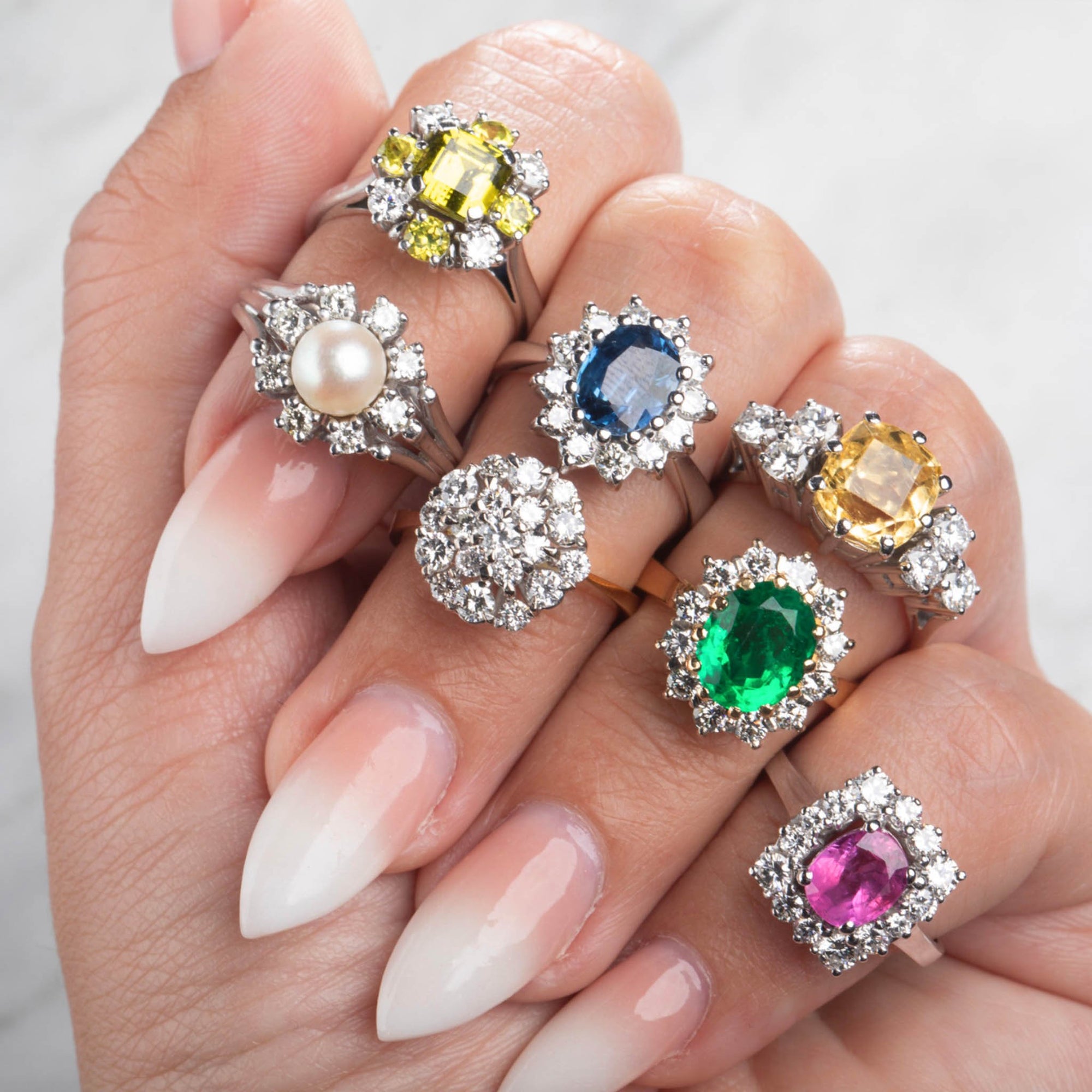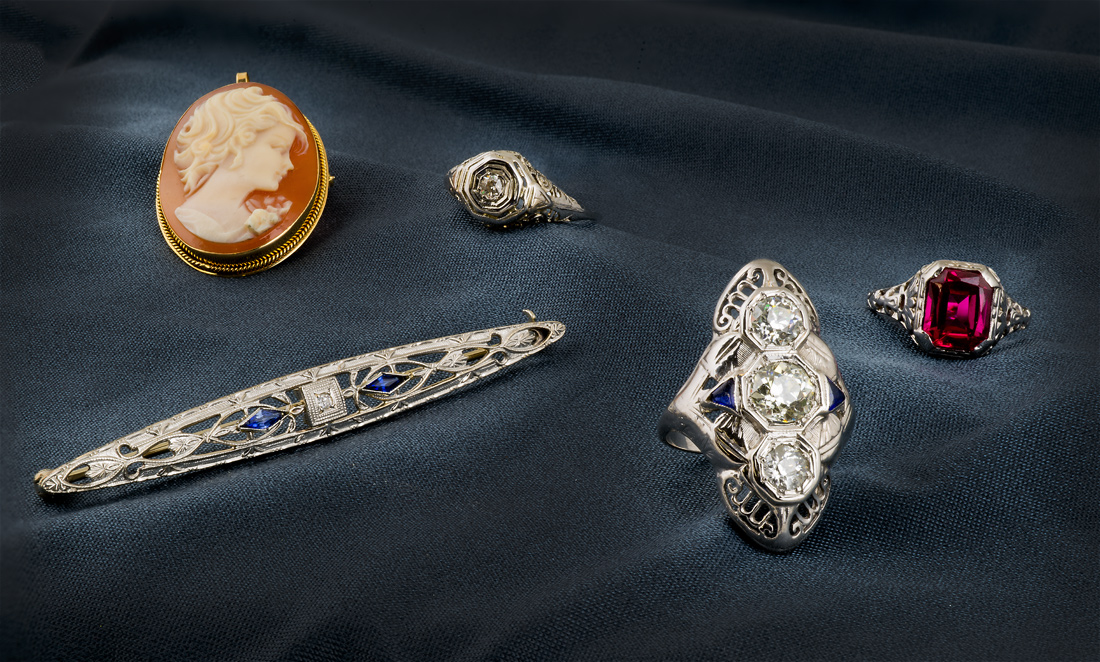Reveal the Rich Background Behind Stunning Estate Jewelry Collections
The exploration of estate jewelry collections offers an unique home window right into history, revealing the intricate partnership in between craftsmanship and cultural advancement. What tricks might these collections still hold?
The Origins of Estate Jewelry
Just how did estate precious jewelry pertained to embody the abundant background and artistry of past ages? The origins of estate jewelry can be mapped back to different periods of workmanship, where fashion jewelry was not just a device but a representation of societal worths, technological developments, and creative expressions. Each item narrates, commonly associated with the lives of their previous proprietors, encapsulating individual narratives along with historic contexts.
The term "estate fashion jewelry" typically describes used items, frequently from considerable periods such as Victorian, Art Nouveau, or Art Deco. These items were produced with thorough attention to detail, showcasing the ability of craftsmens that utilized products like gold, silver, and priceless gemstones. Unlike contemporary fashion jewelry, estate items frequently feature special layouts that highlight the appearances of their time, thus working as concrete web links to the past.

Notable Design Eras
Throughout background, numerous significant design ages have considerably affected the development of estate fashion jewelry, each characterized by distinct styles, materials, and cultural contexts. The Georgian period (1714-1837) noted the beginning of intricate layouts, usually including nature-inspired themes and the use of products like gold, silver, and gems set in elaborate setups. Following this, the Victorian age (1837-1901) introduced enchanting styles, with sentimental jewelry and cutting-edge methods such as using enamel and cameos.
The Art Nouveau duration (1890-1910) celebrated natural types and the charm of nature, making use of products like opals and pearls in moving styles. This was succeeded by the Art Deco period (1920-1939), which accepted geometric patterns, strong shades, and extravagant products such as platinum and rubies, showing the modernist spirit of the time.
The Mid-Century Modern period (1940-1960) showcased streamlined styles and the use of unconventional products, highlighting minimalism and capability. Each of these ages not just shows the imaginative movements of their time yet also envelops the societal worths and technical improvements that formed fashion jewelry layout, making them a fascinating topic for historians and collection agencies alike.

Famous Estate Precious Jewelry Collections
The rich background of estate jewelry is magnificently exhibited by several popular collections that display the virtuosity and craftsmanship from various style periods. Among the most well-known is the Cartier Collection, which shows the deluxe and innovation of the renowned French jeweler. Pieces from this collection usually feature elaborate styles and charming gems, highlighting the brand name's dedication to great workmanship.
Another remarkable collection is the Lady of Windsor's jewelry collection, which comprises numerous distinct items, consisting of the legendary "Windsor" arm band. This collection not just exhibits the style of the Art Deco period but also carries a rich story of love and loss, as it came from Wallis Simpson, that notoriously married Edward VIII.
The collection of the late starlet Elizabeth Taylor likewise attracts attention in the world of estate fashion jewelry. With many pieces developed by popular jewelers like Bulgari and Cartier, her collection embodies prestige and refinement, emphasizing her individual style and affinity for unique gems.
These popular estate fashion jewelry view it collections function as a testament to the long-lasting attraction of fine jewelry, using insight right into the cultural and imaginative movements that formed their development.
The Cultural Significance
Estate precious jewelry collections go now hold profound cultural significance, mirroring not just the visual values of their corresponding ages but likewise the historic and social contexts in which they were developed. Each piece commonly embodies the craftsmanship and creative patterns of its time, showcasing the advancement of design and technology in fashion jewelry making.
Moreover, these collections work as substantial web links to cultural practices and rituals. As an example, wedding event bands and antique brooches may signify love and familial bonds, while items adorned with details gemstones can stand for social or regional identifications. The materials utilized-- whether gold, silver, or gemstones-- commonly inform stories of trade, exploration, and the riches buildup of societies.
Caring for Your Estate Parts
Caring for estate jewelry items requires a thoughtful approach to guarantee their long life and maintain their one-of-a-kind features. To keep the elegance of these prizes, it is necessary to manage them with treatment. Constantly clean estate fashion jewelry using a soft, lint-free cloth after each wear to eliminate oils and dust. For much deeper cleansing, make use of a moderate soap service and a soft brush, taking care to avoid harsh chemicals that might damage delicate materials.
Storage space is similarly crucial; store pieces independently in a fabric-lined box to stop tangling and scratching. Take into consideration utilizing anti-tarnish pouches or towels for silver products, as this aids to reduce the tarnishing procedure. Additionally, stay clear of subjecting precious jewelry to extreme moisture, severe temperatures, or straight sunlight, which can detrimentally affect gems and metals.
Normal evaluations are essential. Examine for loose rocks, used clasps, or harmed settings, and look for professional repair services when needed. Consulting a jewelry expert experienced in vintage or antique items can you could try here provide specialized care options. By implementing these methods, enthusiasts can maintain their estate jewelry's historical and visual worth, making sure these items remain to be treasured for generations ahead.
Verdict
In verdict, the expedition of estate fashion jewelry collections reveals a tapestry of imaginative expression and social significance, showing the worths and visual appeals of different historic periods. Each piece serves as a testament to outstanding craftsmanship and the stories of those who once had them. Understanding the beginnings, design ages, and noteworthy collections improves recognition for these artifacts, stressing their duty in protecting cultural heritage and encouraging ongoing stewardship and look after these remarkable treasures.
The expedition of estate jewelry collections offers a special window into background, disclosing the intricate partnership in between workmanship and cultural development. The origins of estate fashion jewelry can be mapped back to various periods of workmanship, where jewelry was not merely an accessory however a representation of societal values, technological innovations, and imaginative expressions.The term "estate jewelry" typically refers to pre-owned pieces, typically from substantial eras such as Victorian, Art Nouveau, or Art Deco.The rich background of estate precious jewelry is wonderfully exhibited by several prominent collections that showcase the virtuosity and craftsmanship from various layout ages.In conclusion, the expedition of estate jewelry collections discloses a tapestry of artistic expression and social significance, reflecting the values and looks of different historical durations.
Comments on “Why Estate Jewelry Austin TX is Perfect for Adding Character to Your Collection”